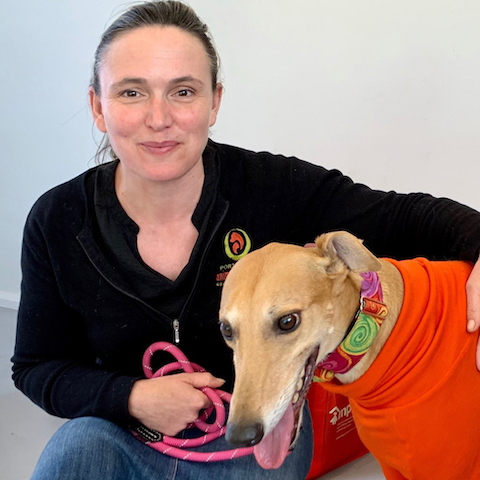Meet Dr Bec

Who is Dr Rebecca Goode?
Rebecca, or Dr Bec as she is fondly known, is a veterinarian with a passion for pet Greyhounds. Actually, she's pretty much nuts for all animals, but Greys are extra special.
Bec runs the GAP veterinary clinic in Seymour – where she sees thousands of beautiful Greys going to new homes. Many (if not most) of these new homes have not had a Greyhound before.
Bec also runs the Port Phillip Animal Hospital in Melbourne with her partner Craig.
Bec really wants new parents to have the information they need to keep their pet Grey healthy and happy, so on top of her work with GAP she's created Greys Matter, where people can find answers to their questions.
What are corns?
Despite how common corns are in Greyhounds, we're not quite sure exactly what they are. There are three main theories:
- One is that they're a reaction to trauma or foreign matter (eg a bit of grit) where the body tries to wall off something
- The second possibility is that corns are due to a virus, a bit like a papilloma or wart virus (this has been very popular, but is now falling out of favour)
- A third theory is that they form due to friction and pressure because Greyhounds don't have enough fat in their pad cushions (this would make them a bit like human foot corns)
Corns are almost unheard of in other breeds of dogs.

What are the symptoms of corns?
The main symptom is lameness. If your Grey is limping, you should take a look at the pads. A corn typically looks like a circular spot on the pad. It may be lighter or darker than the rest of the pad and will usually be very sore if pressed.
It's not uncommon for a dog to have several corns at the same time.
How are corns treated?
There are several different treatment options. Which one is chosen depends on the size and severity of the corn. Options include:
- cushioning the corn with a boot or bandage
- shaving or filing the corn flat
- surgical removal of the corn (most common)
- Flexor tenotomy (becoming more common)
- amputation of the toe
The last one seems extreme but because corns are notorious for coming back despite treatment, it can be the best way to control pain for some dogs.
Dr Bec says "prevention is better than cure. If you get a Grey, you might want to invest in some good quality booties."
You can visit Dr Bec at https://www.greysmatter.vet/ and at https://www.ppah.com.au/




